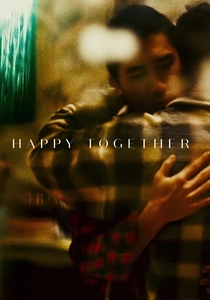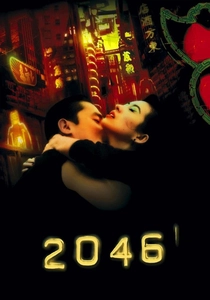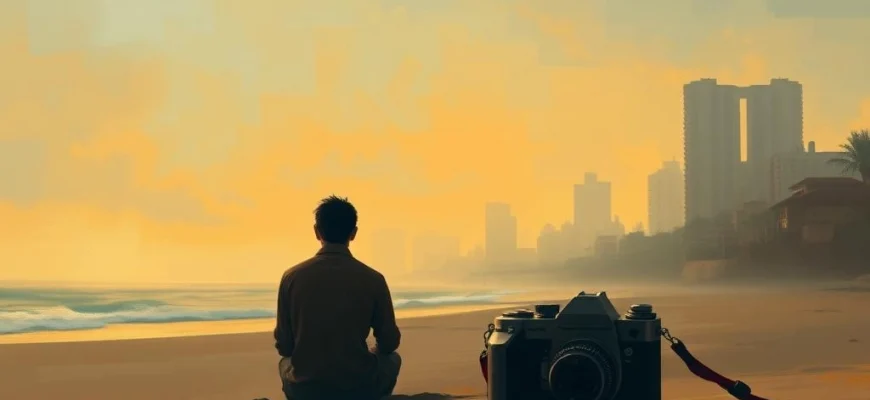If you loved the dreamy, melancholic atmosphere of Days of Being Wild (1990), you're in for a treat. This article explores 10 movies and shows that capture the same poetic storytelling, complex characters, and nostalgic longing that made Wong Kar-wai's masterpiece unforgettable. Whether you're a fan of slow-burning romance or visually stunning cinema, these recommendations will transport you to similarly evocative worlds.

Chungking Express (1994)
Description: A fragmented narrative that delves into urban loneliness and fleeting connections, blending romance with a sense of melancholy. The film's kinetic energy and use of pop culture references create a unique, dreamlike quality.
Fact: The film was shot quickly in between the production of another movie, using natural lighting and handheld cameras. The famous scene of Faye Wong dancing to 'California Dreamin'' was improvised on set.
 Watch Now
Watch Now 
Fallen Angels (1995)
Description: A stylized exploration of alienation and desire in a neon-lit city, featuring disjointed storytelling and a focus on characters who are emotionally adrift. The film's visual flair and unconventional structure heighten its sense of urban isolation.
Fact: The movie was originally conceived as part of 'Chungking Express' but grew into a separate project. The use of wide-angle lenses and distorted perspectives gives the film its distinctive, almost surreal look.
 Watch Now
Watch Now 
In the Mood for Love (2000)
Description: A visually stunning film that explores themes of unfulfilled love and longing, with a strong emphasis on mood and atmosphere. The use of color, music, and slow pacing creates a deeply emotional and introspective experience.
Fact: The film's iconic cheongsam dresses were designed by William Chang, who also served as the production and costume designer. The soundtrack features a recurring motif from Shigeru Umebayashi's 'Yumeji's Theme,' which has become synonymous with the film.
 Watch Now
Watch Now 
Happy Together (1997)
Description: A raw and intimate portrayal of a turbulent relationship, set against the backdrop of a foreign land. The film's grainy cinematography and emotional intensity capture the highs and lows of love and separation.
Fact: The film was shot in Argentina, far from the usual Hong Kong settings. The title is ironic, as the couple's relationship is anything but happy for most of the film.
 Watch Now
Watch Now 
2046 (2004)
Description: A poetic meditation on memory, time, and lost love, weaving together multiple storylines with a futuristic undertone. The film's lush visuals and nonlinear narrative create a haunting, reflective mood.
Fact: The number '2046' refers to both a hotel room number and the year when Hong Kong's 'one country, two systems' policy is set to expire. The film features recurring characters from earlier works, creating a sense of continuity.
 Watch Now
Watch Now 
The Vertical Ray of the Sun (2000)
Description: A lyrical portrayal of family dynamics and hidden emotions, set against the lush backdrop of Vietnam. The film's dreamy cinematography and emphasis on quiet moments evoke a sense of nostalgia and introspection.
Fact: The film's title refers to the time of day when the sun is at its highest point, symbolizing clarity and revelation. The director also composed the film's score, blending traditional Vietnamese music with contemporary sounds.
 Watch Now
Watch Now 
Millennium Mambo (2001)
Description: A hypnotic journey through youth, love, and disillusionment, capturing the aimlessness of modern life. The film's vibrant visuals and electronic soundtrack create a sensory experience that mirrors the protagonist's emotional state.
Fact: The opening shot, featuring the protagonist walking through a tunnel with a voiceover, is one of the most iconic in modern cinema. The film was shot on digital video, giving it a distinct, almost documentary-like quality.
 Watch Now
Watch Now 
Oldboy (2003)
Description: A visceral and psychologically intense story of revenge and obsession, marked by striking visuals and a nonlinear narrative. The film's brutal honesty and emotional rawness make it a powerful exploration of human nature.
Fact: The famous hallway fight scene was shot in one continuous take, with no cuts or CGI. The protagonist ate a live octopus on camera, which sparked controversy but was meant to symbolize his desperation.
 Watch Now
Watch Now 
The Handmaiden (2016)
Description: A sumptuously crafted tale of deception and desire, with intricate plotting and a focus on forbidden relationships. The film's opulent visuals and psychological depth mirror the complexities of its characters' emotions.
Fact: The story is loosely based on the novel 'Fingersmith' by Sarah Waters, but transposed from Victorian England to 1930s Korea under Japanese rule. The film's elaborate sets and costumes were meticulously researched to reflect the period accurately.
 Watch Now
Watch Now 
Burning (2018)
Description: A slow-burning mystery that delves into class disparity and existential dread, with a focus on unspoken tensions and ambiguous motivations. The film's atmospheric tension and lingering shots create a sense of unease and longing.
Fact: The film is based on a short story by Haruki Murakami, 'Barn Burning.' The ambiguous ending has sparked numerous interpretations and debates among viewers.
 Watch Now
Watch Now 








